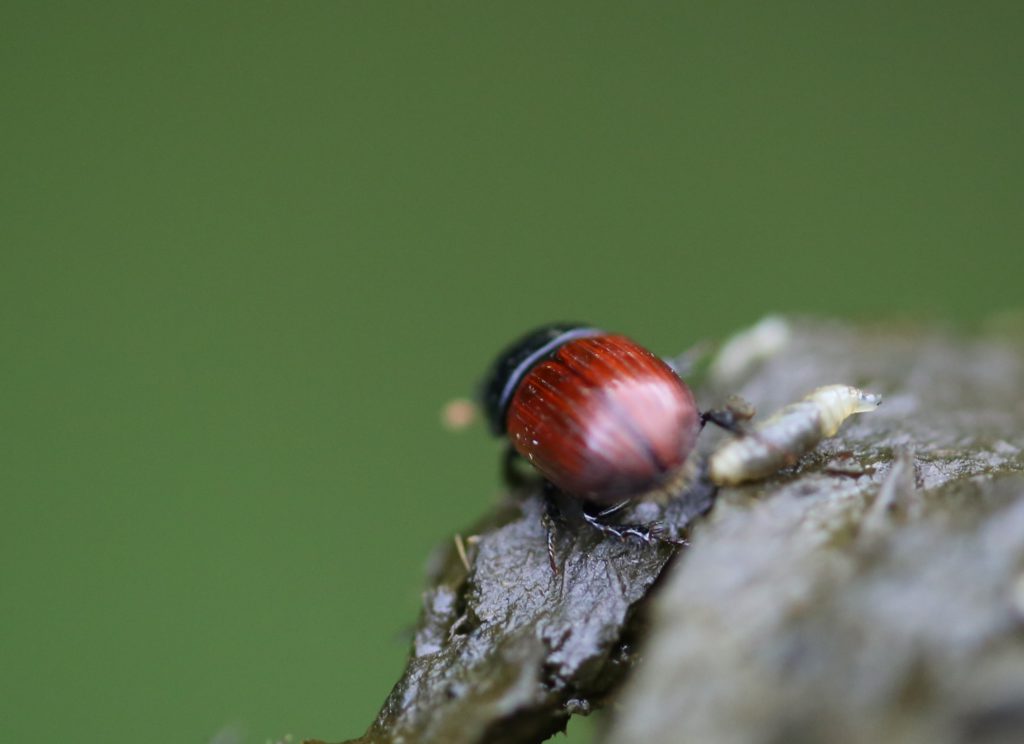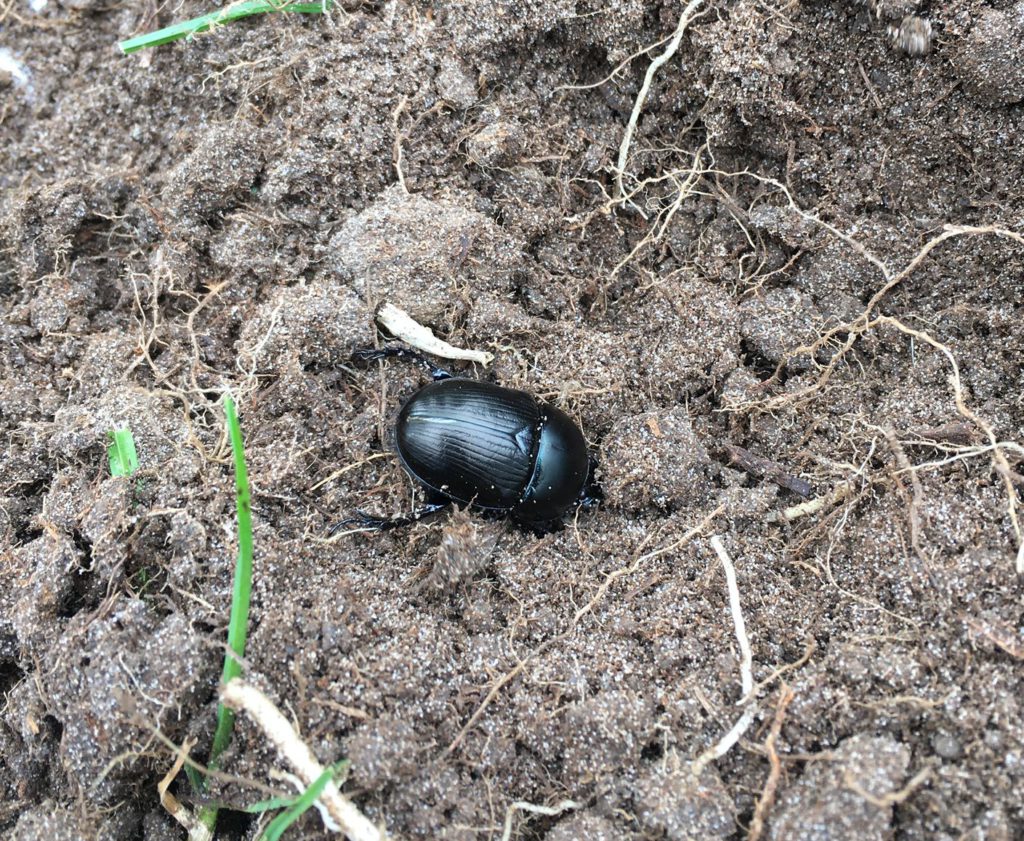
Dung beetles are fascinating creatures that play an essential role in breaking down dung, reducing greenhouse gas emissions and providing vital ecosystem services such as improving pastures, conditioning soils, and reducing parasitic burdens on our livestock.
What are the types of dung beetle?
There are three basic groups of dung beetles: dwellers, tunnellers, and rollers. Dwellers live and reproduce within the dung, tunnellers create channels underneath the dung pat pulling dung through the soil and storing within the tunnels to eat and lay their eggs, rollers roll dung balls away and bury them underground.
Where can you find dung beetles?
Dung beetles are found on every continent except Antarctica. Their habitats range from desert to farmland to forest, owing their entire existence to dung from an equally wide range of animals. You’ll find most dung beetles in or around dung pats from herbivores that typically pass undigested plant material as well as liquid. Adult dung beetles tend to feed on the more liquid portion of the dung pat and dung beetle larvae will feed on the more solid portion. Hence, it’s important for the animals depositing dung to have a diet containing lots of fibre.

Dung beetles in the UK
There are around 60 species of dung beetle in the UK belonging to the tunneller and dweller groups – rollers are found in the warmer climate of the southern hemisphere. Some dung beetles are active during the day whereas some fly at night. Just like humans, dung beetles have preference when it comes to sniffing out food (dung). Some prefer dung from specific animals, some prefer dried dung as opposed to fresh and some are even picky when it comes to the location of dung within a field, however, mostly are generalists and will reside in any they can find.
What are the benefits of dung beetles?
It has been suggested that dung beetles can save the cattle industry around £367 million a year.
How?
Firstly, they increase soil nutrients. Fresh dung contains nitrogen, potassium and phosphorous; dung beetles eat, bury, and release these nutrients for the benefit of the surrounding soil biology, improving soil fertility and soil structure through channelling and drawing down organic matter. This can reduce reliance on fertiliser and makes much better use of our manures.
Secondly, dung beetles reduce pasture fouling. When dung isn’t removed from the field, the grass underneath it will die and the grass surrounding it will be unpalatable to livestock. If you scale this up, it removes a huge area for grazing as well as wasting an abundance of nutrients.
Thirdly, dung beetles are excellent at reducing pest flies from the activities of mites which are transported on the beetles’ bodies. The value of these organisms can be identified through reduced parasites on your livestock that ultimately impact milk yield and liveweight gains due to energy expended by the livestock to defend themselves or fight against infection. In both cases, dung beetles reduce survival of flies and parasites through competition of resources.
Why are dung beetle populations in decline?
Unfortunately, despite the benefits of dung beetles, they are in decline due to the intensification of livestock systems – use of pesticides and anthelmintics. During the grazing season, dung pats could be broken down in a matter of days but instead, many lie rotting for a long time (and producing more methane emissions).
How can we encourage dung beetle populations?
Provision of dung is vital. If we’re able to outwinter even a fraction of our stock it provides a food resource all year round, attracting a more diverse array of dung beetle species.
Feeding livestock a more fibrous diet i.e. moving away from a grain-based diet can also help as it’s important to provide that partially undigested fibrous material.
Finally, long-acting anthelmintics can cause catastrophic loss of dung beetle populations. With veterinary support, frequent weighing of livestock and spot-treating animals offers a more sustainable way of reducing anthelmintic use, reducing the wormer-resistance in intestinal parasites, and protecting dung beetle populations.
How can we find out more about dung beetles?
There’s a wealth of information online about dung beetles, but to really get down to the detail, Farm Carbon Toolkit is holding a two-day conference, in partnership with leading vets, dairy cooperative First Milk and Somerset dairy company Yeo Valley, on Tuesday 11 and Wednesday 12 June at Yeo Valley’s Holt Farm near Blagdon, south of Bristol. Event details and registration can be found here

